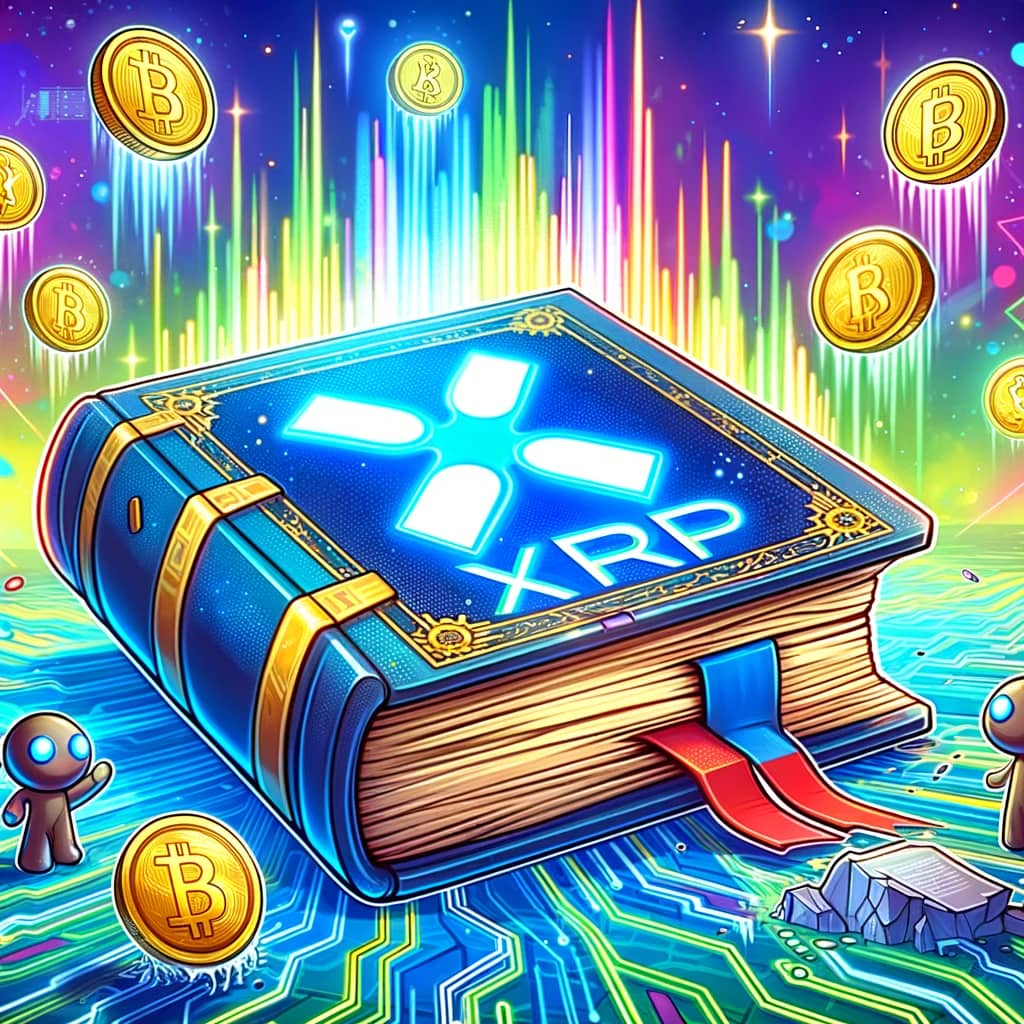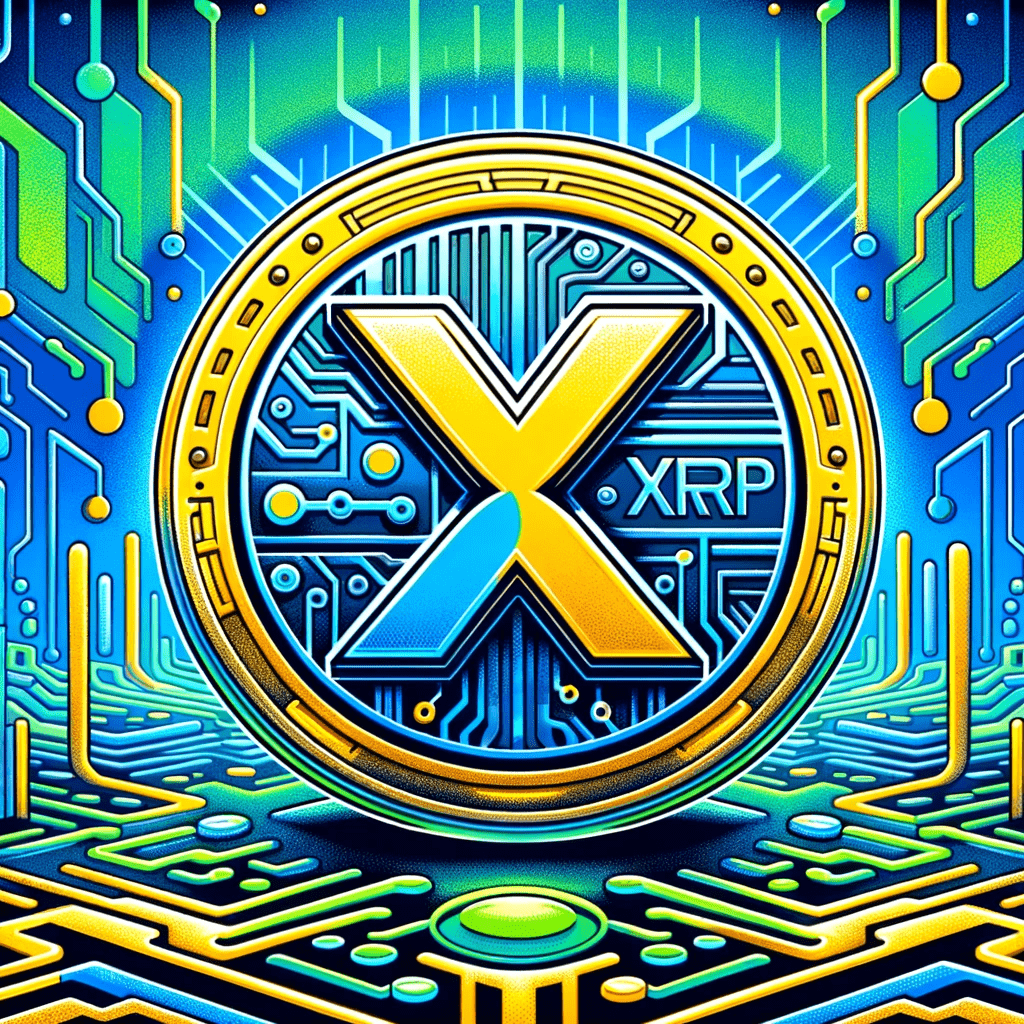Welcome to the world of digital finance, where traditional banking is being challenged by revolutionary technologies like the XRP Ledger. This innovative platform is transforming how money moves across the globe, and it's time for us to uncover its intricacies. Whether you're a beginner crypto investor or simply curious about the future of money, this article is your compass to understanding the XRP Ledger.
Introduction To The XRP Ledger
The XRP Ledger is a decentralized blockchain system that underlies the digital asset XRP, which has emerged as a contender in the digital finance space. Unlike cryptocurrencies that often conjure images of complex codes and impenetrable systems, the XRP Ledger simplifies cross-border payments, ensuring they are faster and more cost-efficient.
What Is the XRP Ledger?
Imagine a vast, global ledger that keeps track of every penny, dollar, or yen as it crisscrosses the world in the form of XRP transactions. That's the essence of the XRP Ledger. It's a real-time gross settlement system (RTGS), currency exchange, and remittance network, all rolled into one seamless platform.
The Role of Ripple Labs In The Creation of XRP
Ripple Labs, the company behind XRP, envisioned a system where money could flow as freely as information does today on the internet. Founded in 2012, Ripple aimed to revolutionize the financial sector by addressing the inefficiencies of existing payment systems.
Primary Features of The XRP Ledger
Open-Source Nature and Global Accessibility
The XRP Ledger operates on an open-source protocol, meaning that its building blocks are accessible to everyone. This transparency fosters trust and allows developers around the world to contribute to the platform's growth and resilience.
Speed And Cost Efficiency Of Transactions
With the XRP Ledger, a transaction can be settled in just 3-5 seconds, eclipsing the days-long process often seen in traditional bank transfers. Moreover, each transaction costs a fraction of a cent, regardless of the amount being sent or the distance it's traveling.
The XRP Ledger vs. Traditional Banking Systems
Comparison Of Transaction Speed And Fees
Compared to traditional banking systems, where international wire transfers can be costly and slow, the XRP Ledger offers an agile and inexpensive alternative. By sidestepping the web of intermediary banks and clearinghouses, it achieves unparalleled speed and lower fees.
Cross-Border Transaction Capabilities
Borderless by design, the XRP Ledger excels at cross-border transactions. This ability to conduct real-time transfers across countries is not just a technical achievement, but a leap towards global financial inclusivity.
Real-World Examples and Use Cases
Financial Institutions Using XRP For International Payments
Several financial institutions have adopted Ripple's technology, leveraging the XRP Ledger for its rapid and cost-effective international payment corridors. This not only enhances customer satisfaction through quicker settlements but also reduces operational costs for banks.
How Individuals Can Use XRP for Personal Transactions
On an individual level, users can take advantage of the ledger's speed to send money to friends or family abroad, pay for services, or even settle trades without the burden of exchange fees or long waiting periods.
Having delved into the basics of what the XRP Ledger is and its compelling features, we’ll next unpack the nuts and bolts of how it operates. In the following section, 'Understanding the Inner Workings of the XRP Ledger: A Step-by-Step Explanation,' we'll explore the cutting-edge mechanics behind XRP's swift transaction process, which sets it apart from conventional cryptocurrencies like Bitcoin.
Understanding the Inner Workings
How Consensus Differs From Proof-of-Work in Bitcoin
One of the standout features of the XRP Ledger is the consensus protocol, a stark contrast to Bitcoin's well-known proof-of-work system. Instead of miners consuming vast amounts of electricity to validate transactions and mine new coins, the XRP Ledger utilizes a network of independent validators. These validators work together to agree on the validity of transactions without a central authority—a process that is not only faster but also more energy-efficient than the mining activities associated with Bitcoin and other cryptocurrencies.
Role of Validators In The XRP Ledger
Validators play a crucial part in the XRP Ledger ecosystem. These are servers hosted by organizations and individuals around the globe—akin to the network's town hall meeting participants, casting votes to reach a consensus. It's worth noting that these validators do not receive XRP or any financial reward for their service, which underscores the cost-effectiveness and low barrier to entry as incentives for participating in the network.
The Transaction Process On The XRP Ledger

When a user sends a transaction on the XRP Ledger, it's like dropping a letter into a global, high-speed mailbox. Instantly, the transaction is broadcast to the network, where it enters a queue before being considered by the validators. At this stage, sophisticated cryptographic algorithms ensure the security and authenticity of the transaction details.
The Voting And Verification Process By Validators
Once a transaction is in line, validators undertake a digital 'show of hands' to vote on the transaction's validity. It's a continuous process where the majority must agree. If there's consensus, the transaction moves to the ledger, becoming a candidate for the next 'ledger version,' which is updated every few seconds. Should disagreements arise, transactions are left pending for the next round of voting.
Settlement And Finalization Of Transactions
Following successful consensus, the outcome is a new closed ledger version, considered final and immutable. Thus, the transaction has now been officially settled and recorded on the XRP Ledger for all eternity, or at least for as long as the blockchain endures.
Avoiding The Need For Mining
The XRP Ledger's avoidance of cryptocurrency mining spells major savings in transaction costs. With mining out of the equation, the associated fees typically paid to miners are non-existent, thus enabling micropayments and fostering greater financial inclusion.
Environmental Implications Of The XRP Ledger's Efficiency
The efficiency of the XRP Ledger also indicates a lower carbon footprint compared to mining-based cryptocurrencies, aligning with global efforts towards sustainability and heralding a new era of eco-friendly fintech solutions.
Foreign Exchange On The XRP Ledger
How The Ledger Manages Multiple Currencies
The XRP Ledger supports not just its native XRP token but also has the capability for users to issue and transact in various fiat currencies and other assets. This feature sets the stage for an efficient and decentralized exchange system within the ledger itself, simplifying the process of currency conversion.
Benefits Of A Decentralized Platform For Currency Exchange
By enabling direct trades between parties without intermediaries, the XRP Ledger offers lower costs and increased speed when compared to traditional foreign exchange markets. This platform democratizes access to global markets and catalyzes financial innovation.
As we've navigated through the intricacies of transaction validation and the unique consensus mechanism that defines the XRP Ledger, it becomes clear that this digital ledger is not just a base for cryptocurrency transactions but also a platform for broader financial applications. In the next section, 'Exploring the Technical Aspects of the XRP Ledger and Its Functionality,' we will delve into the advanced security features, the decentralization debate, and the potential future developments that could define the trajectory of the XRP Ledger and its place in the fintech world.
Exploring the Technical Aspects of the XRP Ledger and Its Functionality
The Role Of Cryptographic Algorithms In the XRP Ledger
At the heart of the XRP Ledger's security lies its advanced cryptographic algorithms. Similar to the impenetrable codes used by global security agencies, these algorithms encrypt the transaction data making it virtually impossible to hack or falsify. This cryptographic technology is the bedrock upon which digital assets like XRP can be exchanged with a surety akin to physical currency exchanges.
Explaining Irreversible Transactions and Security Benefits
Irreversibility of transactions is another cornerstone of the XRP Ledger's integrity. Once a transaction has been added to the ledger after consensus, it cannot be altered or erased. This feature provides a robust defense against double-spending and fraudulent activities, ensuring that once your transaction is complete, it's set in digital stone.
The Ledger's Decentralization Debate
Understanding Critique On Ripple's Influence Over the Network
Despite operating a decentralized ledger, Ripple Labs has faced scrutiny regarding the centralization of decision-making within the network. Critics often point to the limited number of validators and Ripple’s influence in the default Unique Node List (UNL) for XRP Ledger servers. However, it is crucial to understand that the ledger's open-source protocol permits any entity to run a validator, thereby fostering a path toward greater decentralization.
Discussion Of Validator Selection and Centralization Concerns
Validator selection is pivotal in maintaining the XRP Ledger's health and decentralization. The network continues to evolve, with Ripple encouraging diverse stakeholder participation to strengthen the unbiased validation process that is foundational to the ledger's success.
The Future Of The XRP Ledger
Innovations and Potential Upgrades to the Ledger
The XRP Ledger is continually evolving, with potential upgrades that could enhance scalability, privacy, and smart contract capabilities. Ripple’s steady investment in research and development signifies its commitment to keeping the ledger at the forefront of blockchain technology.
Ripple’s Vision For The Role of XRP In The Future of Finance
Ripple envisions a future where the XRP Ledger acts as a bridge in the Internet of Value, enabling the instantaneous and frictionless flow of money worldwide. The goal is not just to streamline existing financial systems, but to revolutionize the entire concept of money transfer and open new avenues for global financial participation.
With an understanding of the technical details and the legal landscape surrounding the XRP Ledger, we can appreciate the complex ecosystem Ripple has fostered. It stands as a testament to modern financial innovation, striving to redefine the flow of value in an increasingly interconnected world. As we look forward to new developments, we see the XRP Ledger not just as a static technology, but as a dynamic force shaping the contours of tomorrow’s financial infrastructure.






